“Vintage fantasy science fiction pulp magazine Famous Fantastic Mysteries w- Fantastic Novels August 1941” has been added to your cart. View cart
Add to Wishlist
Astounding Science Fiction February 1956 Robert Heinlein Serial
$18.00
This is a complete, “very good -” or better vintage science fiction pulp from 1956 featuring works by Robert Heinlein, Mark Clifton, and Reg Rhein, 162 black and white pages.
Cool Kelly Freas cover art, with internal art done by Freas, Emsh, and van Dongen. Nice!
No loose, torn, or folded pages. Binding is tight and intact. No writing. Pages are tanned on edges and are somewhat brittle, some edge chipping on some
See accompanying images for full condition details and table of contents.
Will ship promptly, carefully packaged.
1 in stock
Ships in 1 to 3 business days, carefully packaged, every shipment with tracking.
SKU:
asf-256
Categories:
Vintage Sci Fi Pulps & Mags, Vintage Science Fiction
Additional information
| Weight | .5 oz |
|---|---|
| Dimensions | 8 × 5 × 1 in |
Be the first to review “Astounding Science Fiction February 1956 Robert Heinlein Serial” Cancel reply
Related products
Harlan Ellison et al “Nebula Winners Thirteen” Vintage 1981 paperback anthology First edition
$18.00
This is a "very good plus" or better vintage 1981 paperback with a solid binding, no writing, no loose, torn or folded pages. Text block is tight, closes flat, text block shows tanning. A light reading crease on front cover along spine, otherwise amazingly preserved - You don't come across vintage paperbacks this nice very often!
See accompanying images for full condition details. See picture of back cover for contents. Will ship promptly, carefully packaged to arrive safely to you!
See accompanying images for full condition details. See picture of back cover for contents. Will ship promptly, carefully packaged to arrive safely to you!
Harlan Ellison et al “Nebula Winners Thirteen” Vintage 1981 paperback anthology First edition
$18.00
This is a "very good plus" or better vintage 1981 paperback with a solid binding, no writing, no loose, torn or folded pages. Text block is tight, closes flat, text block shows tanning. A light reading crease on front cover along spine, otherwise amazingly preserved - You don't come across vintage paperbacks this nice very often!
See accompanying images for full condition details. See picture of back cover for contents. Will ship promptly, carefully packaged to arrive safely to you!
See accompanying images for full condition details. See picture of back cover for contents. Will ship promptly, carefully packaged to arrive safely to you!
Vintage Sci-Fi Paperback: My Name is Legion by Roger Zelazny, 1981 Edition
$16.00
This is a very nice vintage paperback (very good - very good plus) edition of Roger Zelazny's 1976 anthology/compilation "My Name is Legion".
Shows slight minimal aging and a little edge wear on covers, but no significant flaws (no writing, tags, marks, loose, torn or folded pages). Certainly a great addition to a vintage science fiction collection and a worthy gift! See the accompanying images for full condition details. Will ship promptly, carefully packaged, with tracking. About the book: "My Name is Legion" by Roger Zelazny is a "science fiction" story line that combines cyberpunk elements with existential depth. The book consists of three interconnected novellas ("The Eve of Ragnarok," "Kjwalll'kje'k'koothaïlll'kje'k," and "'Home is the Hangman") that follow a futuristic investigator known only as "Legion"—a man with no legal identity who manipulates global surveillance systems to solve crimes. The novellas: "The Eve of RUMOKO" – The protagonist must uncover a saboteur on a project using nuclear explosives to create artificial islands. "'Kjwalll'kje'k'koothai'lll'kje'k" – Set at a research station in the Bahamas, the hero investigates a diver’s mysterious death, possibly involving dolphins. "Home Is the Hangman" – A sentient robot, lost years before, may have returned to Earth to kill its creators. These stories are linked by their protagonist and themes of identity, surveillance, and the ethical dilemmas of technology. They are not directly connected to Zelazny’s other famous works like "The Last Defender of Camelot" or "For a Breath I Tarry". Why You Should Read It: 1) Cyberpunk Before Cyberpunk – Zelazny’s vision of a hyper-surveilled society predates Neuromancer and other cyberpunk classics, making it a fascinating proto-cyberpunk gem. 2) Philosophical & Psychological Depth – The protagonist grapples with identity, free will, and the nature of humanity, themes that remain deeply relevant in today’s AI-driven world. 3) Award-Winning Excellence – The final novella, "'Home is the Hangman," won both the Nebula in 1976 and Hugo 1976 for Best Novella. Also nominated for the Locus Award for Best Collection in 1977. If You Enjoyed These, then "My Name is Legion" is likely to be in your wheelhouse: >>John Brunner – The Shockwave Rider (for its take on computer networks and identity) >>Alfred Bester – The Demolished Man (for noir SF with a psychological edge) >>Philip K. Dick – A Scanner Darkly (for its themes of surveillance and shifting identity) Interesting Facts: The second story’s title, "'Kjwalll'kje'k'koothai'lll'kje'k," is intentionally unpronounceable, reflecting the communication barrier between humans and dolphins—a clever nod to the story’s central mystery. The title "My Name is Legion" is a biblical reference, taken from the Gospel of Mark, where a demon identifies himself as "Legion, for we are many." Zelazny chose this title to reflect the protagonist's fragmented identity and his ability to assume different roles and personas. Relevance Today: The themes explored in "My Name is Legion," such as the impact of technology on society and the nature of identity, are still relevant today. Zelazny's vision of a future where technology has blurred the lines between human and machine is both fascinating and cautionary.
Shows slight minimal aging and a little edge wear on covers, but no significant flaws (no writing, tags, marks, loose, torn or folded pages). Certainly a great addition to a vintage science fiction collection and a worthy gift! See the accompanying images for full condition details. Will ship promptly, carefully packaged, with tracking. About the book: "My Name is Legion" by Roger Zelazny is a "science fiction" story line that combines cyberpunk elements with existential depth. The book consists of three interconnected novellas ("The Eve of Ragnarok," "Kjwalll'kje'k'koothaïlll'kje'k," and "'Home is the Hangman") that follow a futuristic investigator known only as "Legion"—a man with no legal identity who manipulates global surveillance systems to solve crimes. The novellas: "The Eve of RUMOKO" – The protagonist must uncover a saboteur on a project using nuclear explosives to create artificial islands. "'Kjwalll'kje'k'koothai'lll'kje'k" – Set at a research station in the Bahamas, the hero investigates a diver’s mysterious death, possibly involving dolphins. "Home Is the Hangman" – A sentient robot, lost years before, may have returned to Earth to kill its creators. These stories are linked by their protagonist and themes of identity, surveillance, and the ethical dilemmas of technology. They are not directly connected to Zelazny’s other famous works like "The Last Defender of Camelot" or "For a Breath I Tarry". Why You Should Read It: 1) Cyberpunk Before Cyberpunk – Zelazny’s vision of a hyper-surveilled society predates Neuromancer and other cyberpunk classics, making it a fascinating proto-cyberpunk gem. 2) Philosophical & Psychological Depth – The protagonist grapples with identity, free will, and the nature of humanity, themes that remain deeply relevant in today’s AI-driven world. 3) Award-Winning Excellence – The final novella, "'Home is the Hangman," won both the Nebula in 1976 and Hugo 1976 for Best Novella. Also nominated for the Locus Award for Best Collection in 1977. If You Enjoyed These, then "My Name is Legion" is likely to be in your wheelhouse: >>John Brunner – The Shockwave Rider (for its take on computer networks and identity) >>Alfred Bester – The Demolished Man (for noir SF with a psychological edge) >>Philip K. Dick – A Scanner Darkly (for its themes of surveillance and shifting identity) Interesting Facts: The second story’s title, "'Kjwalll'kje'k'koothai'lll'kje'k," is intentionally unpronounceable, reflecting the communication barrier between humans and dolphins—a clever nod to the story’s central mystery. The title "My Name is Legion" is a biblical reference, taken from the Gospel of Mark, where a demon identifies himself as "Legion, for we are many." Zelazny chose this title to reflect the protagonist's fragmented identity and his ability to assume different roles and personas. Relevance Today: The themes explored in "My Name is Legion," such as the impact of technology on society and the nature of identity, are still relevant today. Zelazny's vision of a future where technology has blurred the lines between human and machine is both fascinating and cautionary.
Vintage Sci-Fi Paperback: My Name is Legion by Roger Zelazny, 1981 Edition
$16.00
This is a very nice vintage paperback (very good - very good plus) edition of Roger Zelazny's 1976 anthology/compilation "My Name is Legion".
Shows slight minimal aging and a little edge wear on covers, but no significant flaws (no writing, tags, marks, loose, torn or folded pages). Certainly a great addition to a vintage science fiction collection and a worthy gift! See the accompanying images for full condition details. Will ship promptly, carefully packaged, with tracking. About the book: "My Name is Legion" by Roger Zelazny is a "science fiction" story line that combines cyberpunk elements with existential depth. The book consists of three interconnected novellas ("The Eve of Ragnarok," "Kjwalll'kje'k'koothaïlll'kje'k," and "'Home is the Hangman") that follow a futuristic investigator known only as "Legion"—a man with no legal identity who manipulates global surveillance systems to solve crimes. The novellas: "The Eve of RUMOKO" – The protagonist must uncover a saboteur on a project using nuclear explosives to create artificial islands. "'Kjwalll'kje'k'koothai'lll'kje'k" – Set at a research station in the Bahamas, the hero investigates a diver’s mysterious death, possibly involving dolphins. "Home Is the Hangman" – A sentient robot, lost years before, may have returned to Earth to kill its creators. These stories are linked by their protagonist and themes of identity, surveillance, and the ethical dilemmas of technology. They are not directly connected to Zelazny’s other famous works like "The Last Defender of Camelot" or "For a Breath I Tarry". Why You Should Read It: 1) Cyberpunk Before Cyberpunk – Zelazny’s vision of a hyper-surveilled society predates Neuromancer and other cyberpunk classics, making it a fascinating proto-cyberpunk gem. 2) Philosophical & Psychological Depth – The protagonist grapples with identity, free will, and the nature of humanity, themes that remain deeply relevant in today’s AI-driven world. 3) Award-Winning Excellence – The final novella, "'Home is the Hangman," won both the Nebula in 1976 and Hugo 1976 for Best Novella. Also nominated for the Locus Award for Best Collection in 1977. If You Enjoyed These, then "My Name is Legion" is likely to be in your wheelhouse: >>John Brunner – The Shockwave Rider (for its take on computer networks and identity) >>Alfred Bester – The Demolished Man (for noir SF with a psychological edge) >>Philip K. Dick – A Scanner Darkly (for its themes of surveillance and shifting identity) Interesting Facts: The second story’s title, "'Kjwalll'kje'k'koothai'lll'kje'k," is intentionally unpronounceable, reflecting the communication barrier between humans and dolphins—a clever nod to the story’s central mystery. The title "My Name is Legion" is a biblical reference, taken from the Gospel of Mark, where a demon identifies himself as "Legion, for we are many." Zelazny chose this title to reflect the protagonist's fragmented identity and his ability to assume different roles and personas. Relevance Today: The themes explored in "My Name is Legion," such as the impact of technology on society and the nature of identity, are still relevant today. Zelazny's vision of a future where technology has blurred the lines between human and machine is both fascinating and cautionary.
Shows slight minimal aging and a little edge wear on covers, but no significant flaws (no writing, tags, marks, loose, torn or folded pages). Certainly a great addition to a vintage science fiction collection and a worthy gift! See the accompanying images for full condition details. Will ship promptly, carefully packaged, with tracking. About the book: "My Name is Legion" by Roger Zelazny is a "science fiction" story line that combines cyberpunk elements with existential depth. The book consists of three interconnected novellas ("The Eve of Ragnarok," "Kjwalll'kje'k'koothaïlll'kje'k," and "'Home is the Hangman") that follow a futuristic investigator known only as "Legion"—a man with no legal identity who manipulates global surveillance systems to solve crimes. The novellas: "The Eve of RUMOKO" – The protagonist must uncover a saboteur on a project using nuclear explosives to create artificial islands. "'Kjwalll'kje'k'koothai'lll'kje'k" – Set at a research station in the Bahamas, the hero investigates a diver’s mysterious death, possibly involving dolphins. "Home Is the Hangman" – A sentient robot, lost years before, may have returned to Earth to kill its creators. These stories are linked by their protagonist and themes of identity, surveillance, and the ethical dilemmas of technology. They are not directly connected to Zelazny’s other famous works like "The Last Defender of Camelot" or "For a Breath I Tarry". Why You Should Read It: 1) Cyberpunk Before Cyberpunk – Zelazny’s vision of a hyper-surveilled society predates Neuromancer and other cyberpunk classics, making it a fascinating proto-cyberpunk gem. 2) Philosophical & Psychological Depth – The protagonist grapples with identity, free will, and the nature of humanity, themes that remain deeply relevant in today’s AI-driven world. 3) Award-Winning Excellence – The final novella, "'Home is the Hangman," won both the Nebula in 1976 and Hugo 1976 for Best Novella. Also nominated for the Locus Award for Best Collection in 1977. If You Enjoyed These, then "My Name is Legion" is likely to be in your wheelhouse: >>John Brunner – The Shockwave Rider (for its take on computer networks and identity) >>Alfred Bester – The Demolished Man (for noir SF with a psychological edge) >>Philip K. Dick – A Scanner Darkly (for its themes of surveillance and shifting identity) Interesting Facts: The second story’s title, "'Kjwalll'kje'k'koothai'lll'kje'k," is intentionally unpronounceable, reflecting the communication barrier between humans and dolphins—a clever nod to the story’s central mystery. The title "My Name is Legion" is a biblical reference, taken from the Gospel of Mark, where a demon identifies himself as "Legion, for we are many." Zelazny chose this title to reflect the protagonist's fragmented identity and his ability to assume different roles and personas. Relevance Today: The themes explored in "My Name is Legion," such as the impact of technology on society and the nature of identity, are still relevant today. Zelazny's vision of a future where technology has blurred the lines between human and machine is both fascinating and cautionary.
Douglas Adams “Mostly Harmless” 1992 Vintage hardcover Early printing Original dust jacket
$19.00
This is a "very good plus" vintage hardcover in green paper wrapped boards of a black cloth wrapped spine. First edition, 3rd printing, 1992, 277 pages. Tight, crisp spine, unbumped board corners. Clean, bright text block, all edges.
Matching vintage dust wrapper is price clipped, clean and crisp, no creases or tears, no labels or marks See accompanying images and video for full condition details. Will ship promptly, carefully packaged.
Matching vintage dust wrapper is price clipped, clean and crisp, no creases or tears, no labels or marks See accompanying images and video for full condition details. Will ship promptly, carefully packaged.
Douglas Adams “Mostly Harmless” 1992 Vintage hardcover Early printing Original dust jacket
$19.00
This is a "very good plus" vintage hardcover in green paper wrapped boards of a black cloth wrapped spine. First edition, 3rd printing, 1992, 277 pages. Tight, crisp spine, unbumped board corners. Clean, bright text block, all edges.
Matching vintage dust wrapper is price clipped, clean and crisp, no creases or tears, no labels or marks See accompanying images and video for full condition details. Will ship promptly, carefully packaged.
Matching vintage dust wrapper is price clipped, clean and crisp, no creases or tears, no labels or marks See accompanying images and video for full condition details. Will ship promptly, carefully packaged.
Millennium by John Varley: 1985 First Edition Sci-Fi Paperback
$32.00
This is a very clean and bright vintage paperback (very good - very good plus) edition of John Varley's much-loved time-travel novel "Millenium".
First printing in English in paperback. Now a relatively hard-to-find edition. Shows slight minimal aging, a little edge wear on covers, a light spine crease, but no significant flaws (no writing, tags, marks, loose, torn or folded pages). Covers are tight, close flat, sharp corners. Insides of covers are tanned (typical of this vintage of book). Certainly a great addition to a vintage science fiction collection and a worthy gift! See the accompanying images for full condition details. Will ship promptly, carefully packaged, with tracking. About the book: In the skies over Oakland, California, a DC-10 and a 747 are about to collide. In the distant future, a time travel team is preparing to snatch the passengers, leaving prefabricated, smoking bodies behind for the rescue teams to find. The story follows two main characters: Bill Smith, a National Transportation Safety Board investigator in 1983, and Louise Baltimore, a time traveler from a dystopian future where humanity is on the brink of extinction due to pollution and genetic decay. As Bill investigates a mysterious plane crash, he uncovers anomalies that lead him to Louise and the truth about the time travel missions. The novel delves into predestination, paradoxes, and the ethical implications of altering the past to save the future. About the Author: John Varley is a Hugo and Nebula Award-winning author known for his innovative, character-driven science fiction. Emerging in the 1970s as part of the "New Wave" of SF writers, Varley often explored themes of identity, technology, and societal collapse. Millennium fits neatly into his body of work, showcasing a knack for blending hard science fiction with humanistic storytelling. His ability to craft believable future societies and morally complex scenarios makes Millennium a standout in his bibliography. Why You Should Read It If you enjoy smart, thought-provoking science fiction with a noir-ish mystery twist, Millennium is a must-read. The novel excels at balancing tension with philosophical depth, making it more than just a time-travel thriller. Varley’s world-building—particularly his depiction of a bleak, sterile future—is both haunting and fascinating. For collectors, this book is a great addition due to its cult following and its status as a classic of late-20th-century SF. Whether you're drawn to intricate timelines, ethical quandaries, or simply a well-told story with unexpected twists, Millennium delivers. Interesting Fact: Varley originally wrote Millennium after being approached by Hollywood to adapt "Air Raid" into a film. Frustrated with script limitations, he expanded the story into a novel first—giving him the freedom to develop richer characters and a more detailed future society than the movie could portray. Awards and Nominations: While Millennium itself wasn’t a major award-winner, Varley’s original short story "Air Raid" was nominated for a Hugo Award in 1978. If You Enjoyed These, You’ll Like Millennium: "The Time Traveler’s Wife" by Audrey Niffenegger – Like Millennium, this novel plays with nonlinear timelines and the emotional weight of time travel. "Doomsday Book" by Connie Willis – Another SF classic involving time travelers interacting with catastrophic events, blending historical and futuristic drama. "The Man in the High Castle" by Philip K. Dick – Fans of alternate histories and dystopian futures will appreciate Varley’s similarly bleak yet thought-provoking vision.
First printing in English in paperback. Now a relatively hard-to-find edition. Shows slight minimal aging, a little edge wear on covers, a light spine crease, but no significant flaws (no writing, tags, marks, loose, torn or folded pages). Covers are tight, close flat, sharp corners. Insides of covers are tanned (typical of this vintage of book). Certainly a great addition to a vintage science fiction collection and a worthy gift! See the accompanying images for full condition details. Will ship promptly, carefully packaged, with tracking. About the book: In the skies over Oakland, California, a DC-10 and a 747 are about to collide. In the distant future, a time travel team is preparing to snatch the passengers, leaving prefabricated, smoking bodies behind for the rescue teams to find. The story follows two main characters: Bill Smith, a National Transportation Safety Board investigator in 1983, and Louise Baltimore, a time traveler from a dystopian future where humanity is on the brink of extinction due to pollution and genetic decay. As Bill investigates a mysterious plane crash, he uncovers anomalies that lead him to Louise and the truth about the time travel missions. The novel delves into predestination, paradoxes, and the ethical implications of altering the past to save the future. About the Author: John Varley is a Hugo and Nebula Award-winning author known for his innovative, character-driven science fiction. Emerging in the 1970s as part of the "New Wave" of SF writers, Varley often explored themes of identity, technology, and societal collapse. Millennium fits neatly into his body of work, showcasing a knack for blending hard science fiction with humanistic storytelling. His ability to craft believable future societies and morally complex scenarios makes Millennium a standout in his bibliography. Why You Should Read It If you enjoy smart, thought-provoking science fiction with a noir-ish mystery twist, Millennium is a must-read. The novel excels at balancing tension with philosophical depth, making it more than just a time-travel thriller. Varley’s world-building—particularly his depiction of a bleak, sterile future—is both haunting and fascinating. For collectors, this book is a great addition due to its cult following and its status as a classic of late-20th-century SF. Whether you're drawn to intricate timelines, ethical quandaries, or simply a well-told story with unexpected twists, Millennium delivers. Interesting Fact: Varley originally wrote Millennium after being approached by Hollywood to adapt "Air Raid" into a film. Frustrated with script limitations, he expanded the story into a novel first—giving him the freedom to develop richer characters and a more detailed future society than the movie could portray. Awards and Nominations: While Millennium itself wasn’t a major award-winner, Varley’s original short story "Air Raid" was nominated for a Hugo Award in 1978. If You Enjoyed These, You’ll Like Millennium: "The Time Traveler’s Wife" by Audrey Niffenegger – Like Millennium, this novel plays with nonlinear timelines and the emotional weight of time travel. "Doomsday Book" by Connie Willis – Another SF classic involving time travelers interacting with catastrophic events, blending historical and futuristic drama. "The Man in the High Castle" by Philip K. Dick – Fans of alternate histories and dystopian futures will appreciate Varley’s similarly bleak yet thought-provoking vision.
Millennium by John Varley: 1985 First Edition Sci-Fi Paperback
$32.00
This is a very clean and bright vintage paperback (very good - very good plus) edition of John Varley's much-loved time-travel novel "Millenium".
First printing in English in paperback. Now a relatively hard-to-find edition. Shows slight minimal aging, a little edge wear on covers, a light spine crease, but no significant flaws (no writing, tags, marks, loose, torn or folded pages). Covers are tight, close flat, sharp corners. Insides of covers are tanned (typical of this vintage of book). Certainly a great addition to a vintage science fiction collection and a worthy gift! See the accompanying images for full condition details. Will ship promptly, carefully packaged, with tracking. About the book: In the skies over Oakland, California, a DC-10 and a 747 are about to collide. In the distant future, a time travel team is preparing to snatch the passengers, leaving prefabricated, smoking bodies behind for the rescue teams to find. The story follows two main characters: Bill Smith, a National Transportation Safety Board investigator in 1983, and Louise Baltimore, a time traveler from a dystopian future where humanity is on the brink of extinction due to pollution and genetic decay. As Bill investigates a mysterious plane crash, he uncovers anomalies that lead him to Louise and the truth about the time travel missions. The novel delves into predestination, paradoxes, and the ethical implications of altering the past to save the future. About the Author: John Varley is a Hugo and Nebula Award-winning author known for his innovative, character-driven science fiction. Emerging in the 1970s as part of the "New Wave" of SF writers, Varley often explored themes of identity, technology, and societal collapse. Millennium fits neatly into his body of work, showcasing a knack for blending hard science fiction with humanistic storytelling. His ability to craft believable future societies and morally complex scenarios makes Millennium a standout in his bibliography. Why You Should Read It If you enjoy smart, thought-provoking science fiction with a noir-ish mystery twist, Millennium is a must-read. The novel excels at balancing tension with philosophical depth, making it more than just a time-travel thriller. Varley’s world-building—particularly his depiction of a bleak, sterile future—is both haunting and fascinating. For collectors, this book is a great addition due to its cult following and its status as a classic of late-20th-century SF. Whether you're drawn to intricate timelines, ethical quandaries, or simply a well-told story with unexpected twists, Millennium delivers. Interesting Fact: Varley originally wrote Millennium after being approached by Hollywood to adapt "Air Raid" into a film. Frustrated with script limitations, he expanded the story into a novel first—giving him the freedom to develop richer characters and a more detailed future society than the movie could portray. Awards and Nominations: While Millennium itself wasn’t a major award-winner, Varley’s original short story "Air Raid" was nominated for a Hugo Award in 1978. If You Enjoyed These, You’ll Like Millennium: "The Time Traveler’s Wife" by Audrey Niffenegger – Like Millennium, this novel plays with nonlinear timelines and the emotional weight of time travel. "Doomsday Book" by Connie Willis – Another SF classic involving time travelers interacting with catastrophic events, blending historical and futuristic drama. "The Man in the High Castle" by Philip K. Dick – Fans of alternate histories and dystopian futures will appreciate Varley’s similarly bleak yet thought-provoking vision.
First printing in English in paperback. Now a relatively hard-to-find edition. Shows slight minimal aging, a little edge wear on covers, a light spine crease, but no significant flaws (no writing, tags, marks, loose, torn or folded pages). Covers are tight, close flat, sharp corners. Insides of covers are tanned (typical of this vintage of book). Certainly a great addition to a vintage science fiction collection and a worthy gift! See the accompanying images for full condition details. Will ship promptly, carefully packaged, with tracking. About the book: In the skies over Oakland, California, a DC-10 and a 747 are about to collide. In the distant future, a time travel team is preparing to snatch the passengers, leaving prefabricated, smoking bodies behind for the rescue teams to find. The story follows two main characters: Bill Smith, a National Transportation Safety Board investigator in 1983, and Louise Baltimore, a time traveler from a dystopian future where humanity is on the brink of extinction due to pollution and genetic decay. As Bill investigates a mysterious plane crash, he uncovers anomalies that lead him to Louise and the truth about the time travel missions. The novel delves into predestination, paradoxes, and the ethical implications of altering the past to save the future. About the Author: John Varley is a Hugo and Nebula Award-winning author known for his innovative, character-driven science fiction. Emerging in the 1970s as part of the "New Wave" of SF writers, Varley often explored themes of identity, technology, and societal collapse. Millennium fits neatly into his body of work, showcasing a knack for blending hard science fiction with humanistic storytelling. His ability to craft believable future societies and morally complex scenarios makes Millennium a standout in his bibliography. Why You Should Read It If you enjoy smart, thought-provoking science fiction with a noir-ish mystery twist, Millennium is a must-read. The novel excels at balancing tension with philosophical depth, making it more than just a time-travel thriller. Varley’s world-building—particularly his depiction of a bleak, sterile future—is both haunting and fascinating. For collectors, this book is a great addition due to its cult following and its status as a classic of late-20th-century SF. Whether you're drawn to intricate timelines, ethical quandaries, or simply a well-told story with unexpected twists, Millennium delivers. Interesting Fact: Varley originally wrote Millennium after being approached by Hollywood to adapt "Air Raid" into a film. Frustrated with script limitations, he expanded the story into a novel first—giving him the freedom to develop richer characters and a more detailed future society than the movie could portray. Awards and Nominations: While Millennium itself wasn’t a major award-winner, Varley’s original short story "Air Raid" was nominated for a Hugo Award in 1978. If You Enjoyed These, You’ll Like Millennium: "The Time Traveler’s Wife" by Audrey Niffenegger – Like Millennium, this novel plays with nonlinear timelines and the emotional weight of time travel. "Doomsday Book" by Connie Willis – Another SF classic involving time travelers interacting with catastrophic events, blending historical and futuristic drama. "The Man in the High Castle" by Philip K. Dick – Fans of alternate histories and dystopian futures will appreciate Varley’s similarly bleak yet thought-provoking vision.
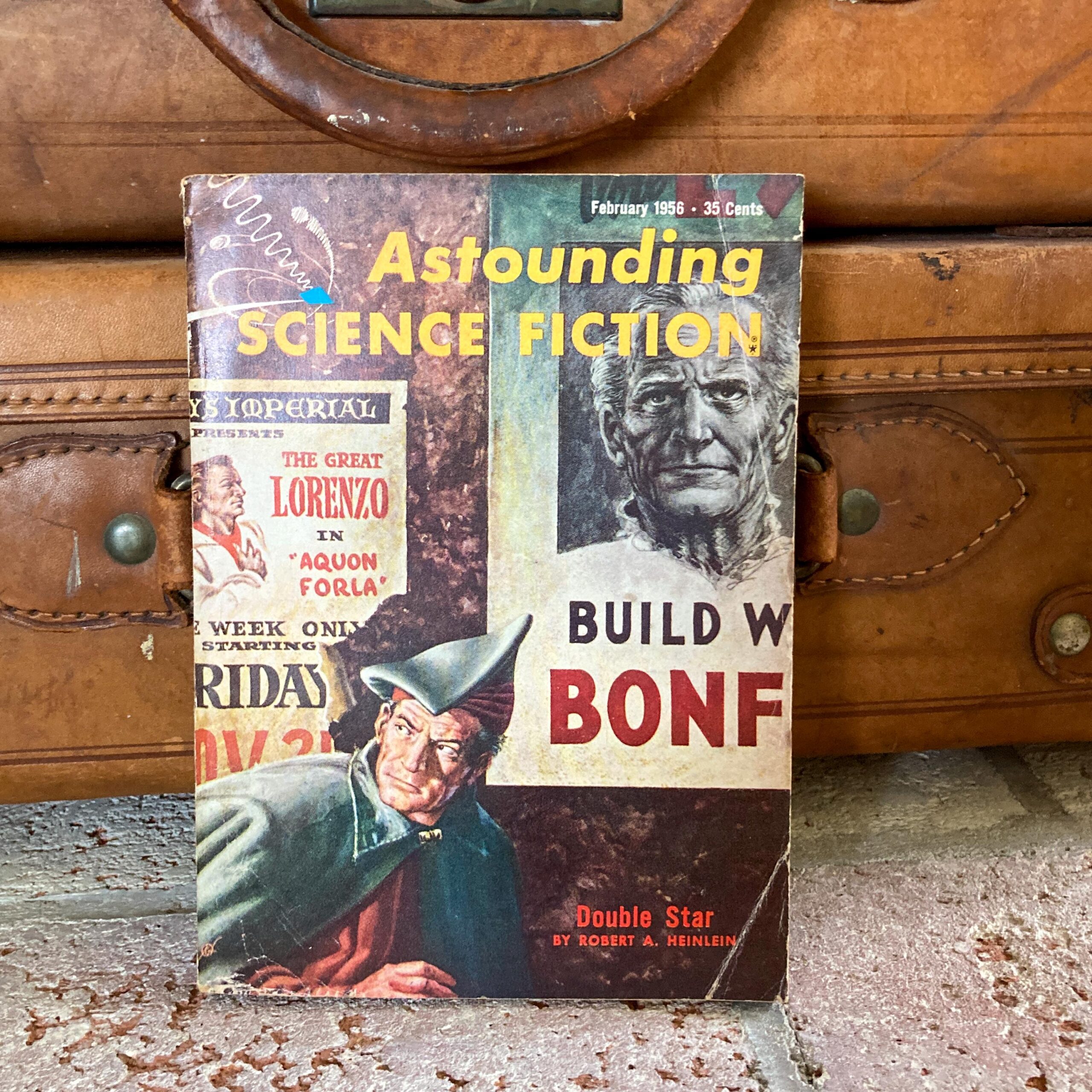
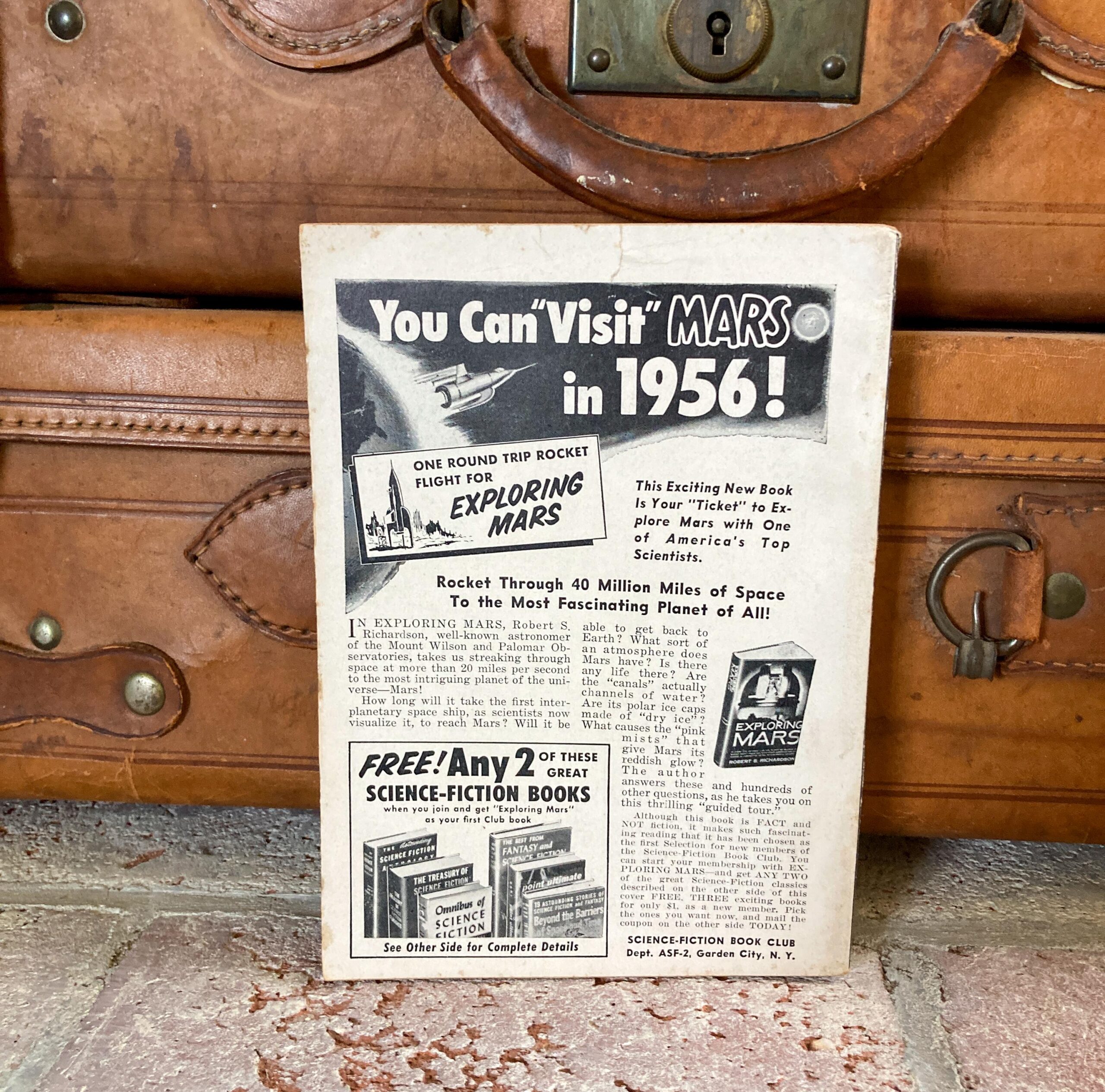
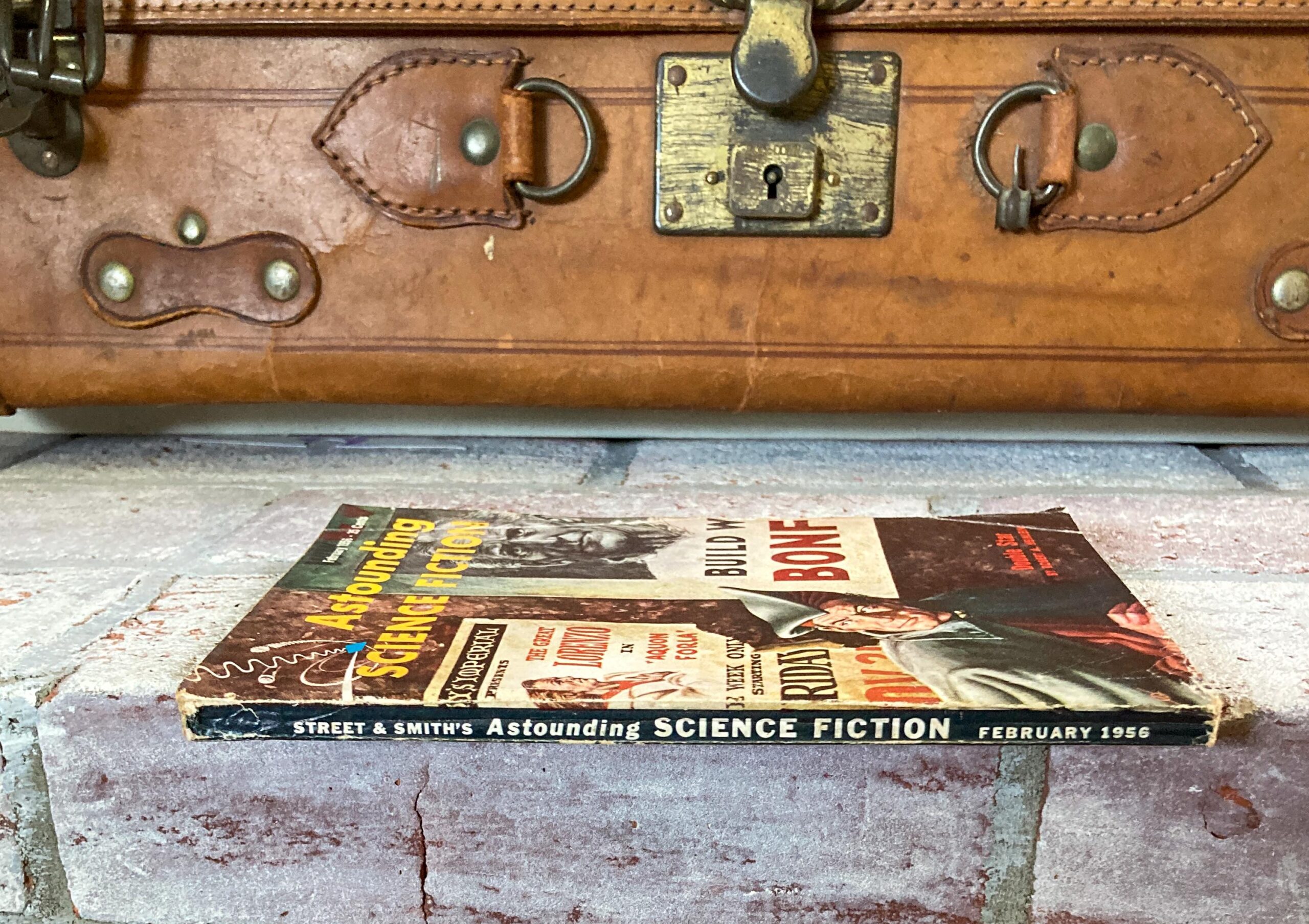
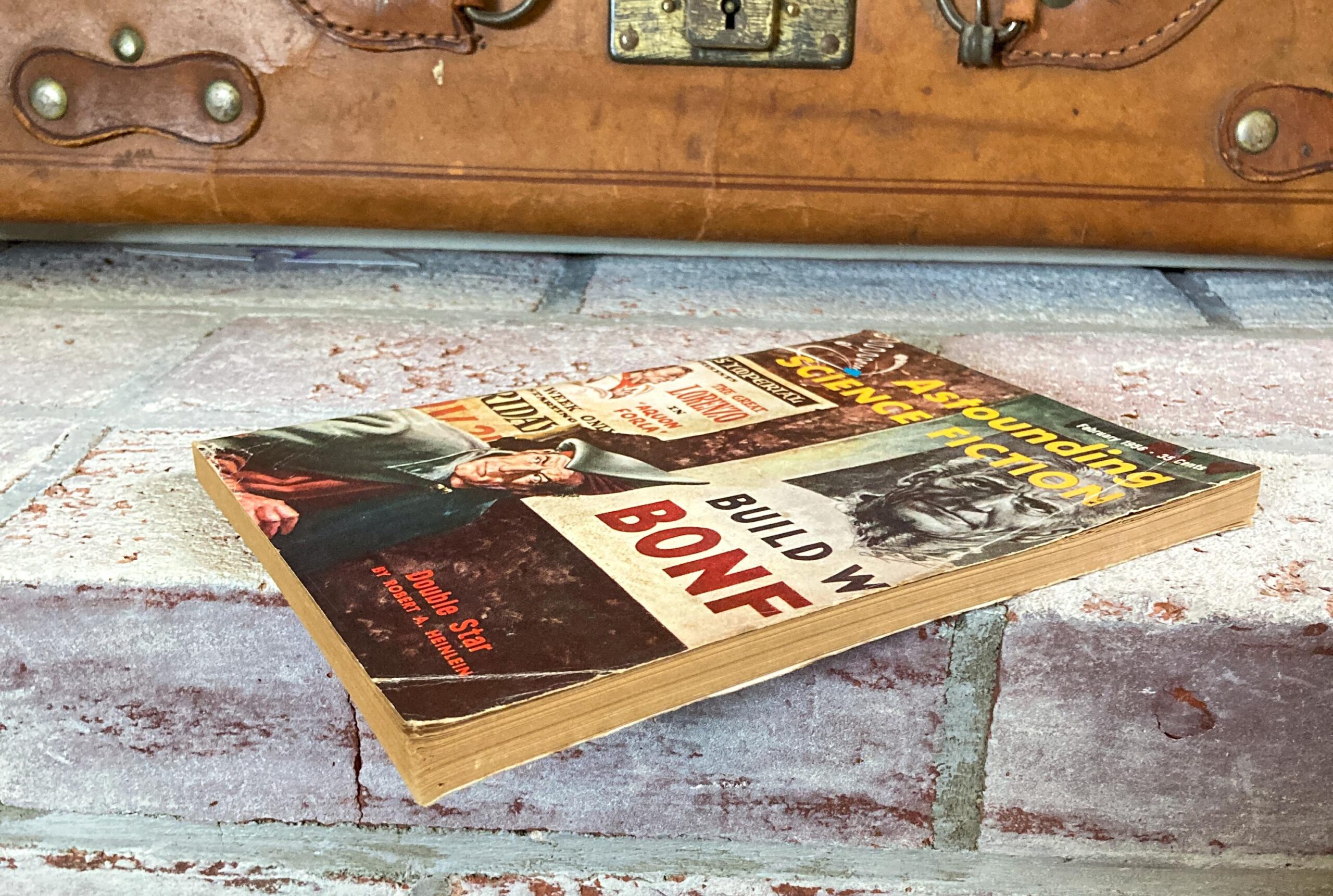
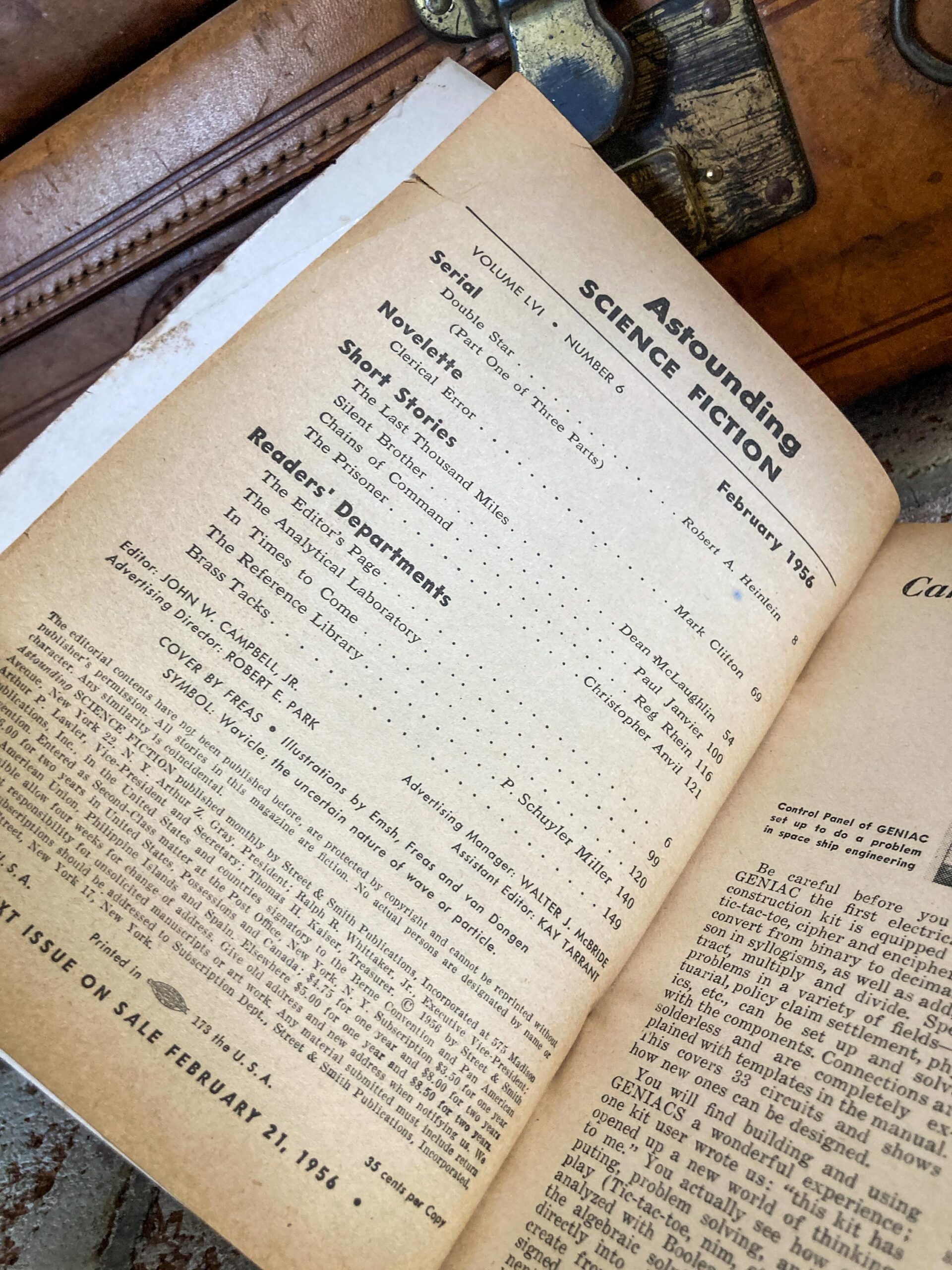
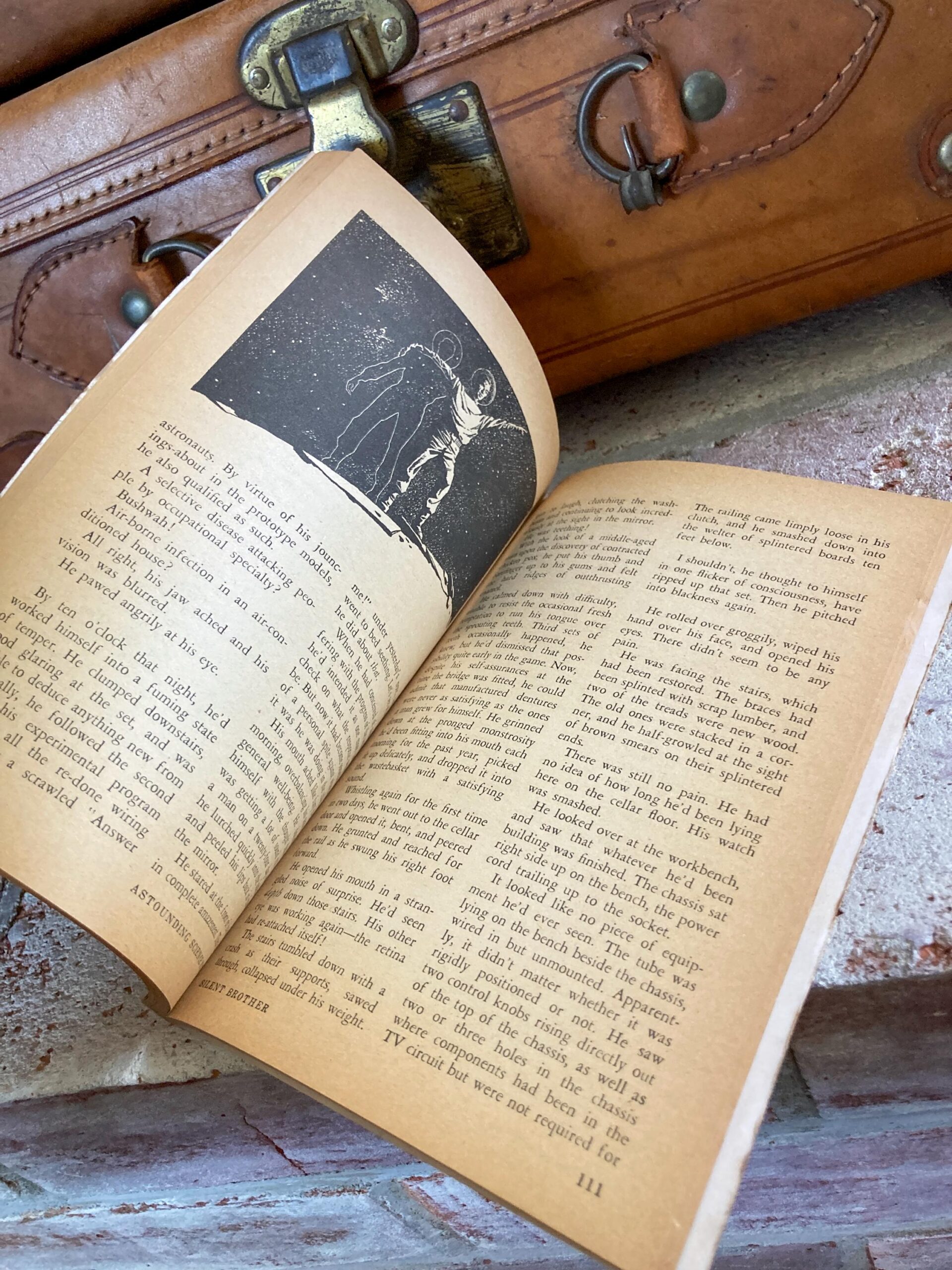
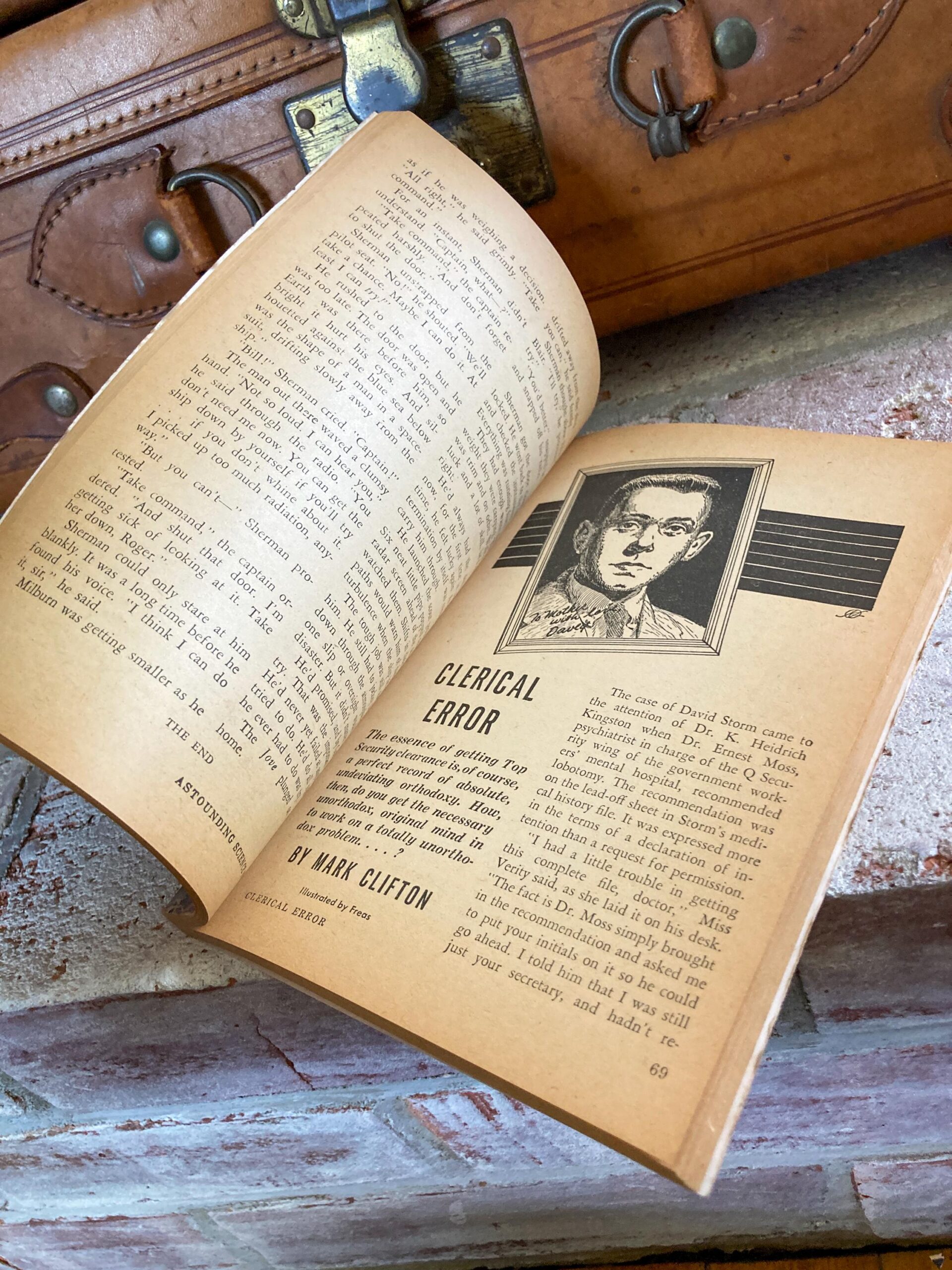
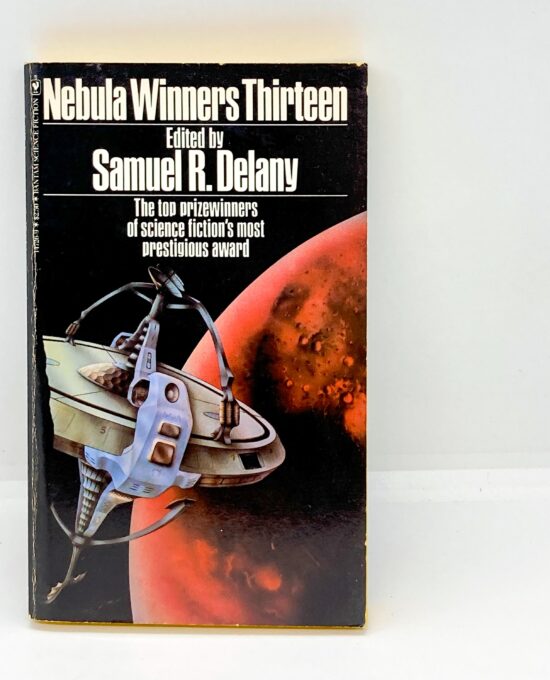
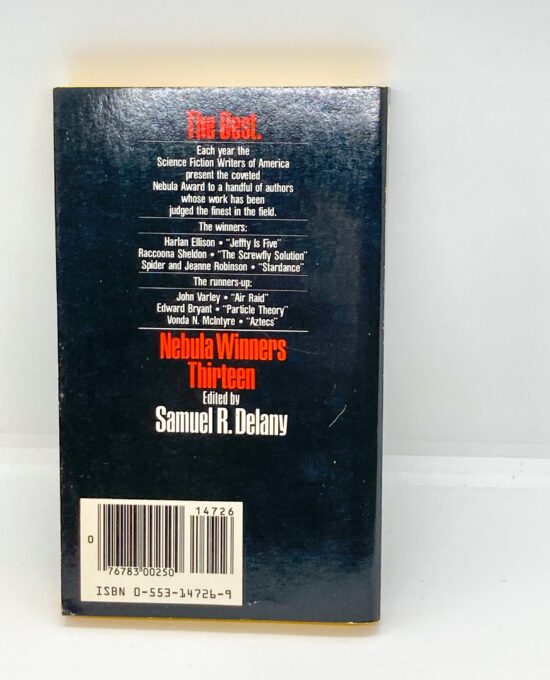
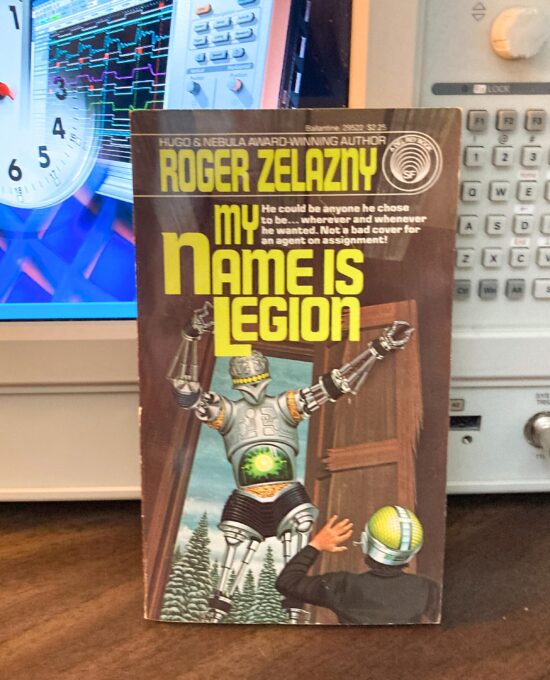
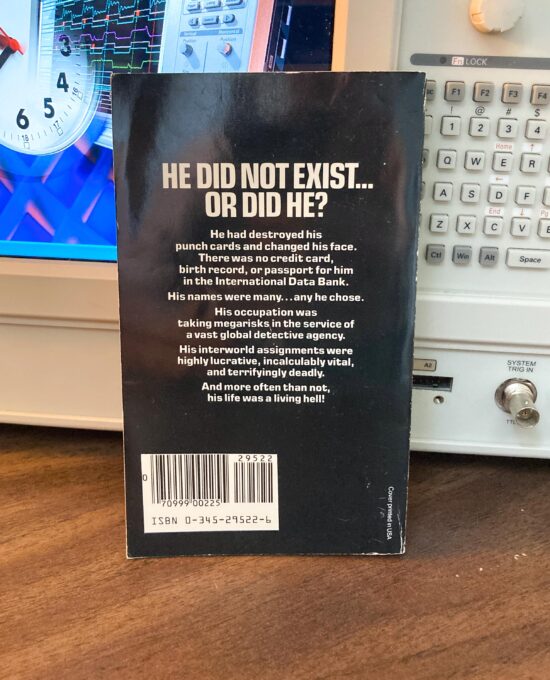


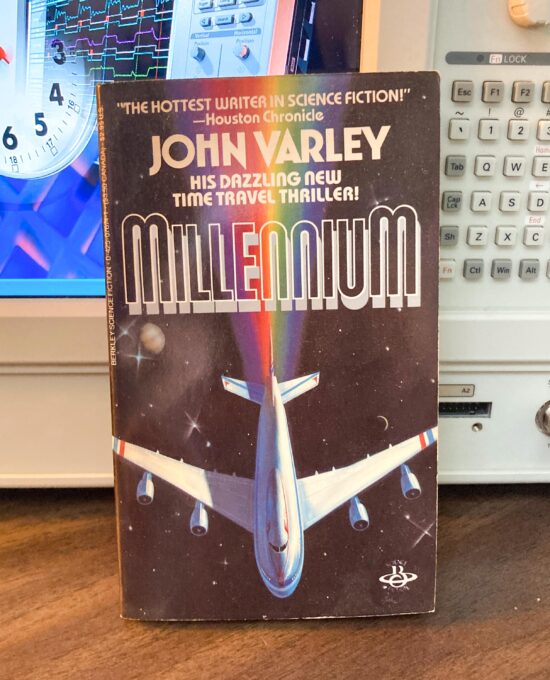
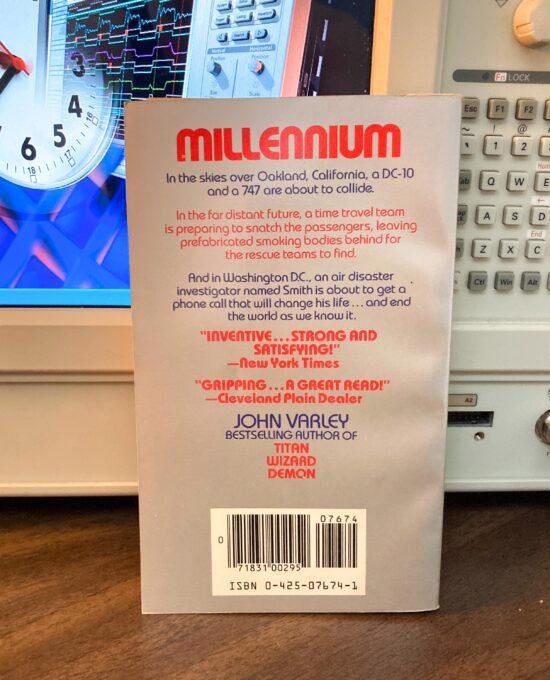
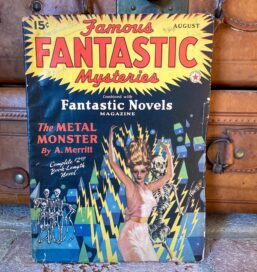
Reviews
There are no reviews yet.